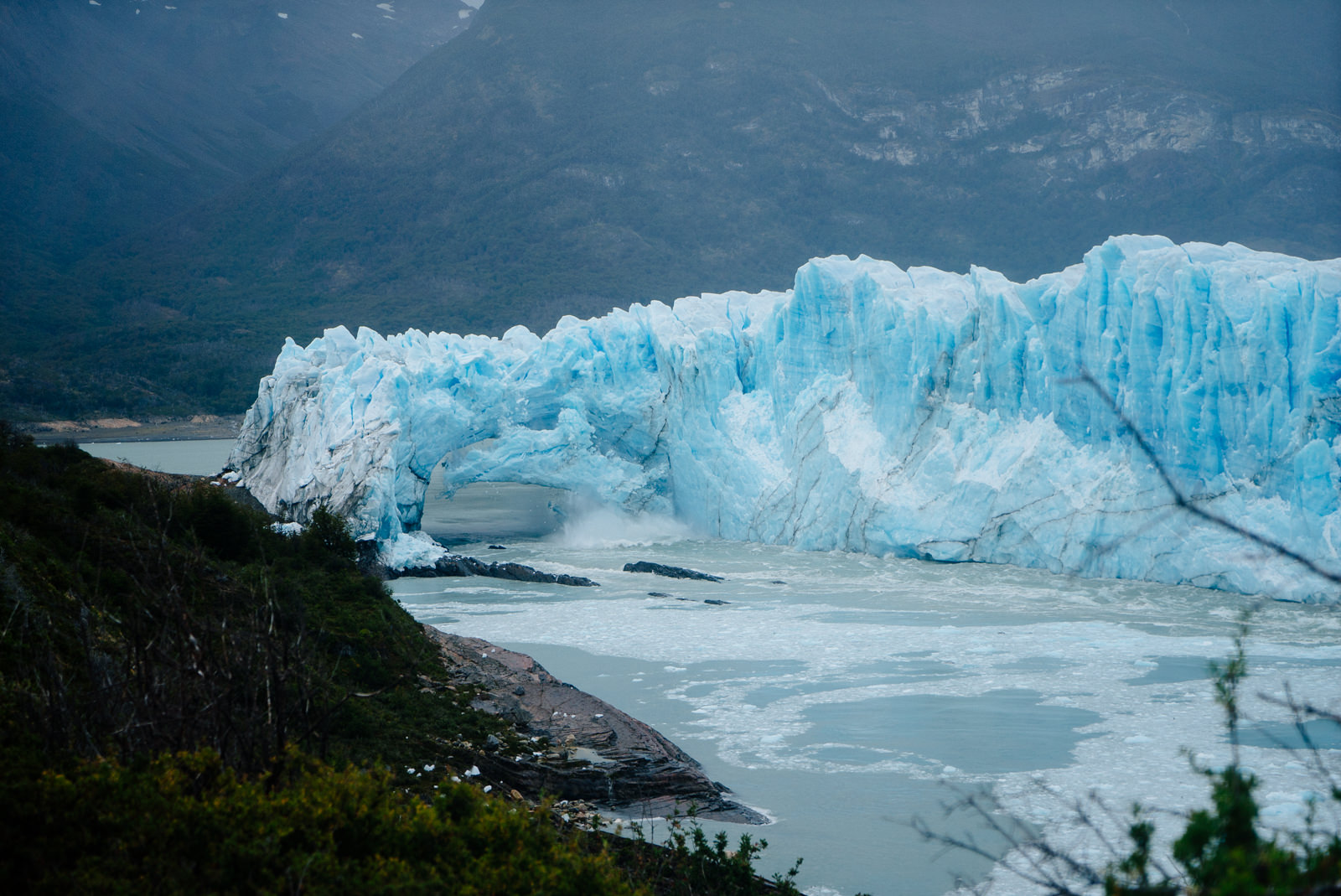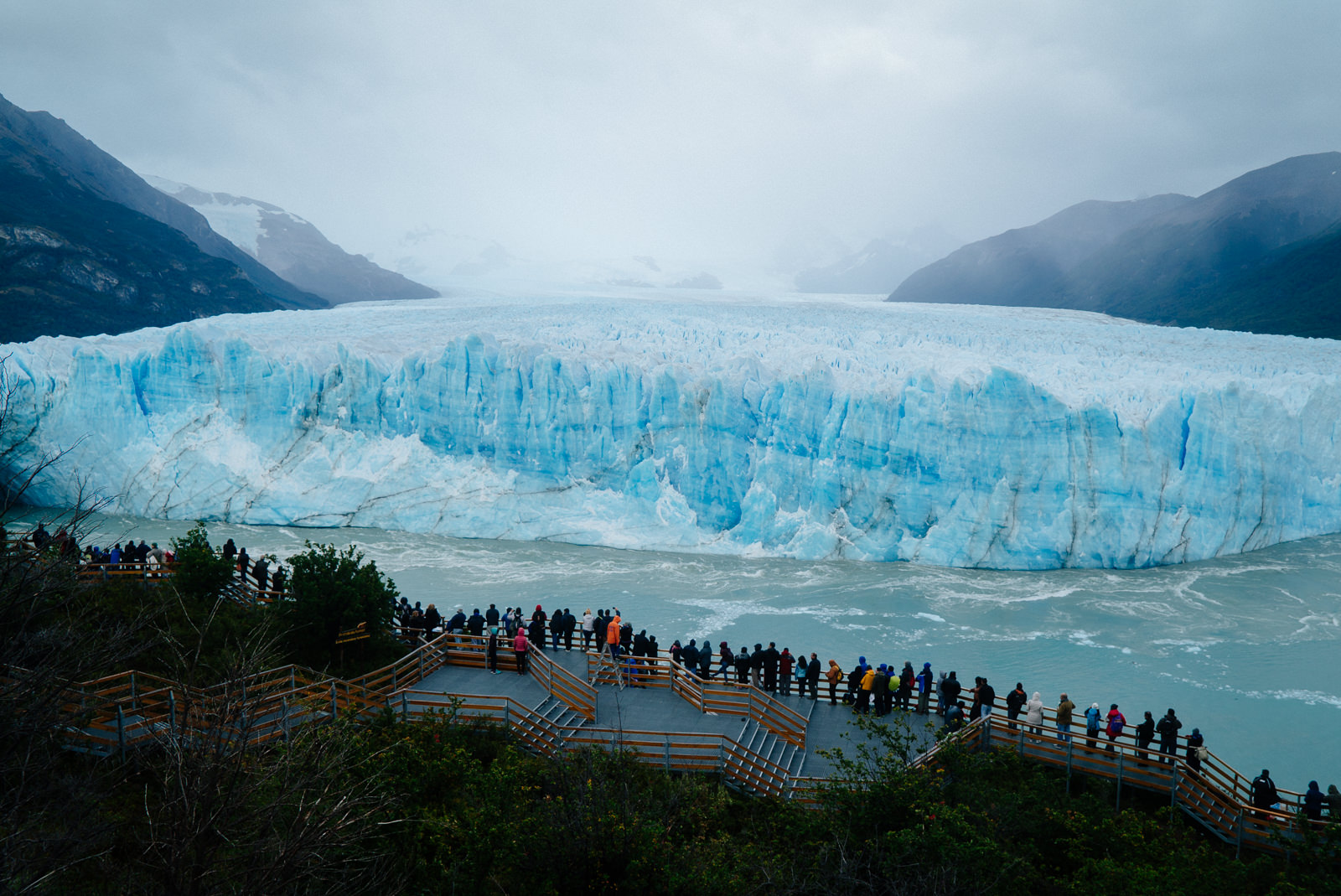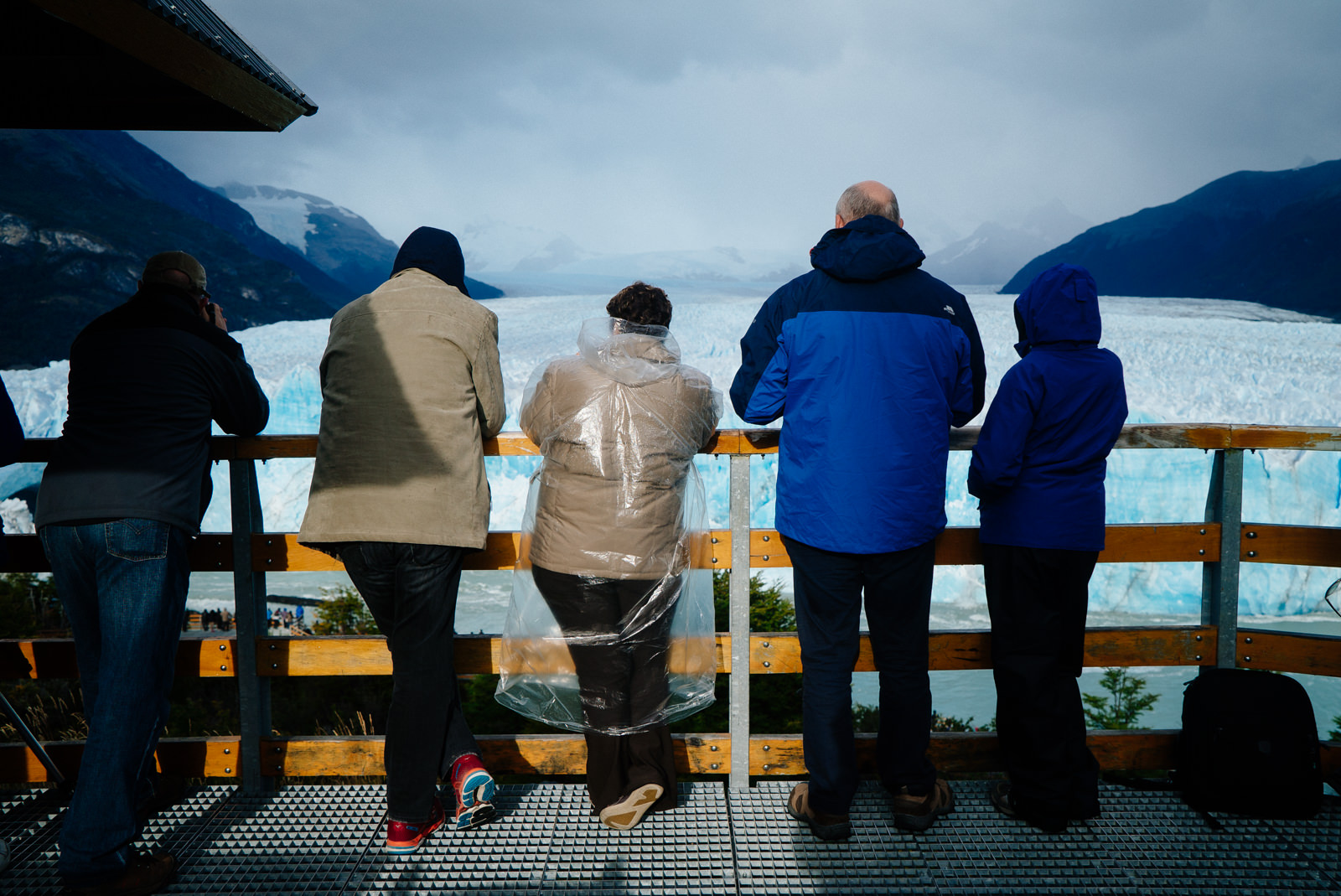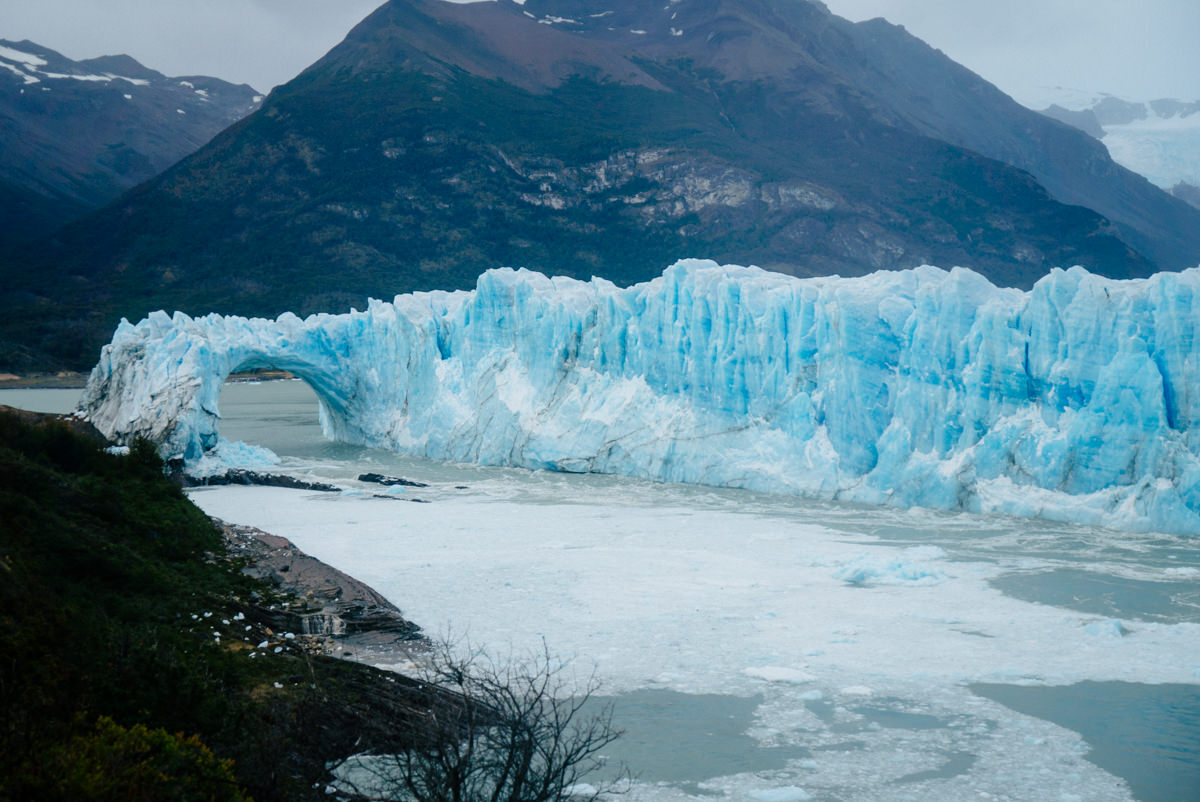Patagonia ARGENTINA: El Calafate & Perito Moreno Glacier Rupture
I always try to maximize a trip by adding on additional destinations, and Antarctica was no exception. My trip to Antarctica required flying to and from Argentina, and making my way down to the southernmost city in Argentina, Ushuaia. Ushuaia is in the Patagonia region of Argentina and Chile, and I have always wanted to see Patagonia’s glorious mountains and glaciers made famous by outdoors enthusiasts, Instagrammers, and the clothing company named after the region. A bit of research about where to go in Argentina within Patagonia led me to plan the next leg of my adventure from Ushuaia to a town called El Calafate, from where we could visit Parque Nacional Los Glacieres (Glaciers National Park). El Calafate has a major airport which can be accessed from Ushuaia or Buenos Aires if you’re visiting Argentina, and from Ushuaia the flight was less than an hour and a half.
Landing at the El Calafate airport I was surprised to see out the window a flat golden desert landscape, contrasted only by an expansive teal blue lake. I didn’t know that so much of Patagonia on the Argentina side is actually desert (up until the Andes mountain range in the west closer to the border with Chile). The airport is 40 minutes or so drive from the town of El Calafate, and as we approached the town the mountains came closer into view. In El Calafate we stayed at a lovely guesthouse called Hostería La Estepa that came highly rated on TripAdvisor. The photographs of this guesthouse set on a grassy hill overlooking Lago Argentino won me over, although La Estepa was a bit on the splurgy side of what I’m willing to spend on accommodation at $290 for 3 nights (which I fortunately was splitting with my travel buddy Alex).
We were not terribly impressed with the town of El Calafate itself which had plenty of restaurants and tourist shops, but the draw of El Calafate is not the town, but rather its proximity to the National Park. The next day we had pre-arranged to be scooped up by a tour bus and taken on a day trip to Los Glacieres National Park for a look at Perito Moreno Glacier and a trek on the glacier’s ice.
PERITO MORENO GLACIER
The Perito Moreno sheet of glacial ice advances down the mountainside at a rate of around 2 meters PER DAY. This is an quickly moving glacier if compared to glaciers in Antarctica as a result of the warmer climate. Once the ice reaches the base of the mountain it breaks apart in chunks into Lago (lake) Argentino. The status of Perito Moreno overall is stable for now, because as much ice replenishes itself at the top as sheds at the bottom.
Slices and columns of ice would break off of the bottom of the glacier every few minutes, creating a crackling sound followed by a very loud boom and splash when they crashed into the lake. That is how massive these pieces of the gigantic glacier were that were breaking off, and they would create such a powerful surge of water that the lake looked like a raging river.
On rare occasions the bottom of the glacier advances across Lago Argentino without breaking apart and touches the other side of the narrow part of the lake, splitting the lake into two separate bodies of water. When this happens the upper part of the lake rises in elevation and puts pressure on the portion of the glacier blocking the lake, eventually tunneling under the ice. Flowing water erodes the ice and gradually enlarges the tunnel under the glacier until it becomes a bridge of ice, which only takes a matter of days to collapse. This rupture had not occurred since 2012, and we just happened to be visiting on a day when we could witness the bridge of ice falling into the lake (alongside hundreds of visitors and news reporters).
As every massive piece of the ice bridge fell into the lake, the crowd shrieked in amazement. I was expecting to see the bridge collapse in one massive chunk, but each time just pieces and more pieces would fall. I captured video and gifs of some very large portions of the ice falling, but unfortunately was rushed away for the trekking portion of our guided tour before the rupture’s finale.
GLACIER TREKKING
The next portion of our tour involved strapping metal crampons to the bottom of our shoes and walking on the glacier. Despite that fast rate that the edge of the glacier is shedding and the rupture that was happening, the area that on the side of the glacier where we went was safe to walk on. We had originally signed up for a full afternoon of trekking on the ice, but the company had changed our tour instead to the shortened version due to wild cattle that had been in the area of the longer trek that had injured some person or property in previous days (I am still confused about how cattle are a danger to people walking on a mountain of on ice).
The crampons made climbing the ice very easy, and trekking on the glacier was fun despite our tour being very short and a bit rushed. At the end of our walk on the glacier our guides brought us to an area on the ice where there were wooden tables and a cooler of whiskey, and they used a mountaineering axe to chop away pieces of ice from the glacier to serve us whiskey on the rocks.
LAGO ROCA
The next day my travel buddy Alex and I rented a car so we could explore more of the area around El Calafate. With the suggestion of our guesthouse host we decided to drive to a small lake called Lago Roca. The road to Lago Roca took us through grasslands and small farms before we reached the isolated National Park entrance and the small milky pale teal lake.
Visited March 2016
All photos by Renee Lusano





















